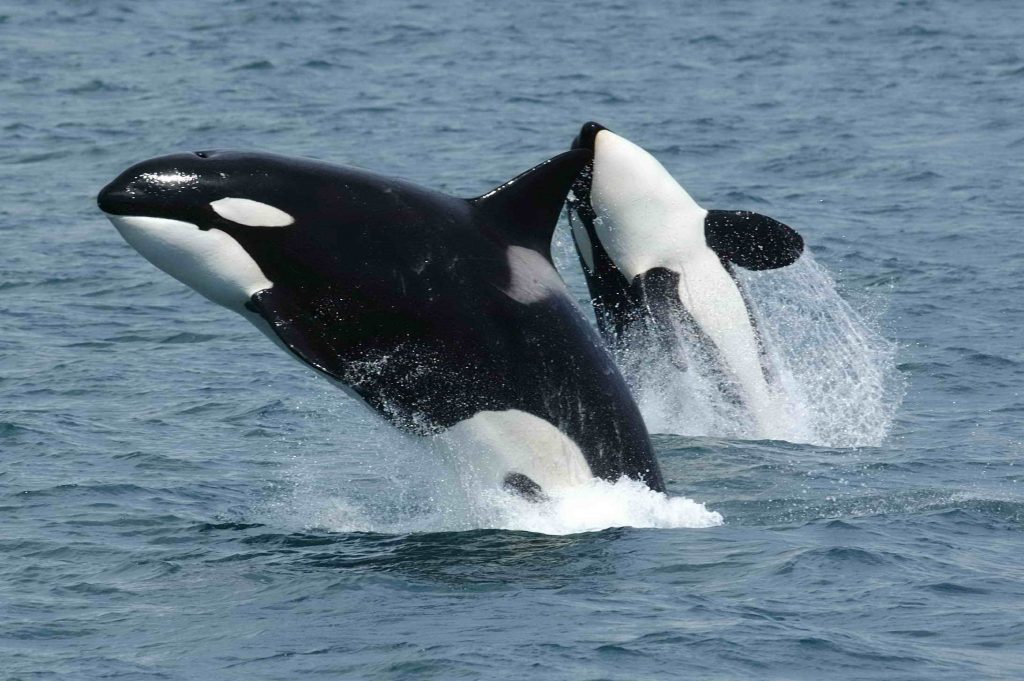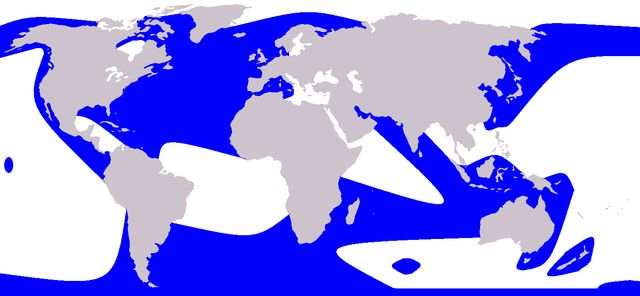
Flying home from Alaska, 24 June 2019
Before my trip to Alaska I rarely thought about killer whales because I’d never had a chance to see them. Now I have and they are quite impressive.
Killer whales or orcas (Orcinus orca) are the largest oceanic dolphin, occurring around the world. Some are resident, some transient, others live offshore. Offshore orcas travel the wide swaths of ocean shown on the map below.

Killer whales are apex predators but what they eat depends on their lifestyle. Resident whales eat fish and are very vocal because fish don’t run away when they hear an orca. Transient whales eat marine mammals, especially seals, and are silent because seals flee at the sound of a killer whale.
Like other dolphins, killer whales are very intelligent and highly social. They swim with their families their entire lives. The family groups are matrilineal, lead by the eldest mother and made up of her sons, daughters, grandchildren and even great-grandchildren. Her knowledge and traditions guide her family long after her reproductive years and actually insure that her children live longer than those whose mothers died.(*)
Resident killer whales of the Pacific Northwest are so well studied that scientists recognize them as individuals from their unique saddle patches behind their dorsal fins. Censuses indicate the population is in decline. The killer whales’ food source, chinook salmon, is also in decline. Are these whales starving? A NOAA Fisheries study in British Columbia used a drone to find out.
From the drone’s photos and videos, scientists could tell if an orca was thin and weak or plumb and strong. During the study they filmed two brothers swimming together, just as they had their entire lives. One was very thin and the two were vocalizing a lot as they swam south. Eventually the weak brother dove and was never seen again. His brother swam back alone, vocalizing on the way. It appears that he accompanied his dying brother during his last moments.
Watch this 11 minute NOAA video to learn more about the resident killer whale population in the eastern North Pacific. Read more about them at NOAA Fisheries.
Unmanned Aerial Vehicle Offers a New View of Killer Whales from NOAA Fisheries on Vimeo.
Killer whales have the closest family ties.
(photos from Wikimedia Commons; click on the captions to see the originals)
(*) Killer whales live into their 90s and are one of only three animals that go through menopause. Humans and pilot whales are the other two.
Amazing Kate, who knew about the menopause? Thanks for always educating us! Safe travels home.